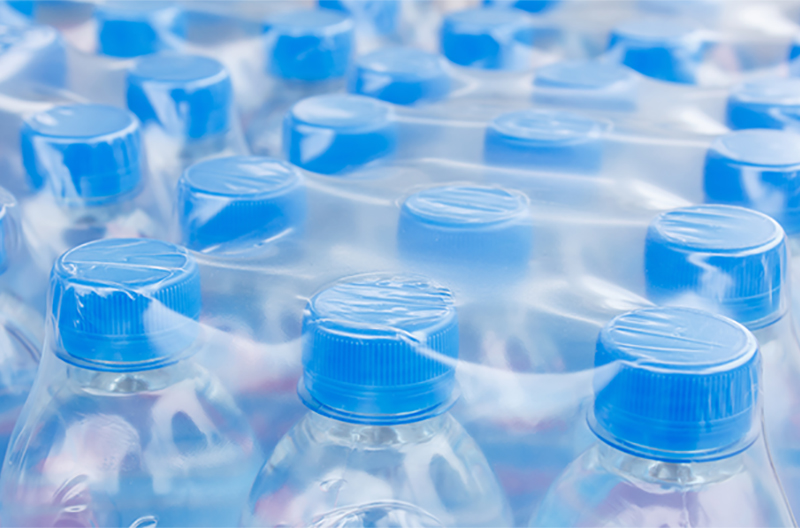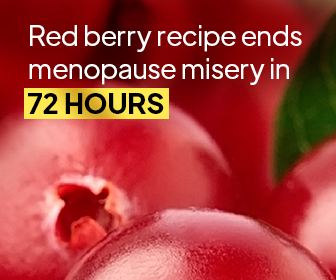After a long workout, you probably reach for a bottle of water to quench your thirst. The same goes for after a night of deep sleep as you try to wash down your morning breath. Let’s not forget your drink of choice after a bite of super spicy salsa dip. Basically, water is always there for you in your moments of need. But for something you use on the daily, it’s alarming how little you might know about the water you drink. Not all water is equal, that’s for sure. So what exactly is the difference between the water coming from your tap and the water you get in a bottle? On top of that, what’s the deal with distilled vs purified water?
Because you put water into your body every day, it’s important to understand the answers to these questions to make the right choice for you and your family. You may have noticed that some water tastes sharper, saltier, or more chlorinated than others. This is due to the chemicals and minerals maintained through different purification methods. But the different types of water options veer from one another on more aspects than just taste.
The minerals and chemicals in your water impact your body in different ways. Some processes, like distilled vs purified water processes, change the levels of those minerals and chemicals and thus change the benefits of the water your drinking. Whether you’re drinking straight from the tap or buying bottled mountain spring water, there’s something to learn about what’s in your water.
The Importance of Minerals in Tap Water
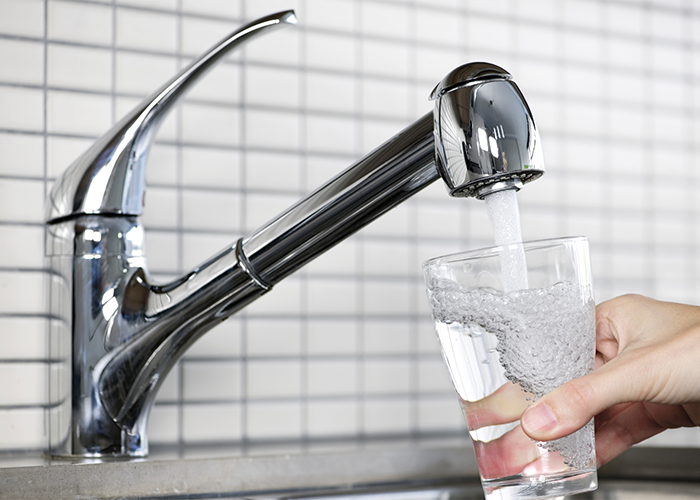
Tap water contains minerals that contribute to your overall health. Specific minerals like potassium and calcium are also important electrolytes. They basically work double-duty to hydrate your body and improve muscle and nerve function. Here are some of the main benefits of the minerals/electrolytes found in tap water:
- Sodium You may have heard that too much sodium is a bad thing. This is true, but the sodium in water is nothing to be afraid of. The levels are so low, all it really does is help your body to absorb the water you drink. Our bodies need sodium in water to control our fluid levels and blood pressure.
- Magnesium Magnesium is essential for various parts of our body. Low magnesium can contribute to depression and other neurological disorders.[1] Too much magnesium in water can make “hard water”, which is water that can build up chalky substance. This can be problematic in pipes or shower heads so it’s good to know the levels you have in your water. However, it’s not harmful to drink.
- Calcium Calcium is important for bone health. Additionally, the combination of calcium and magnesium helps combat constipation.[2] So try to drink a big glass of water the next time your bowels feel backed up. Calcium is a quick fix for jump-starting your digestion.
- Potassium This crucial mineral helps regulate fluid in the body and control muscle spasms. Research even shows that muscle spasms can be a result of dehydration.[3] Potassium is so useful for your body. Plus, the fact that it’s easy accessible in water allows you to have its benefits at your fingertips.
What is Distilled Water?
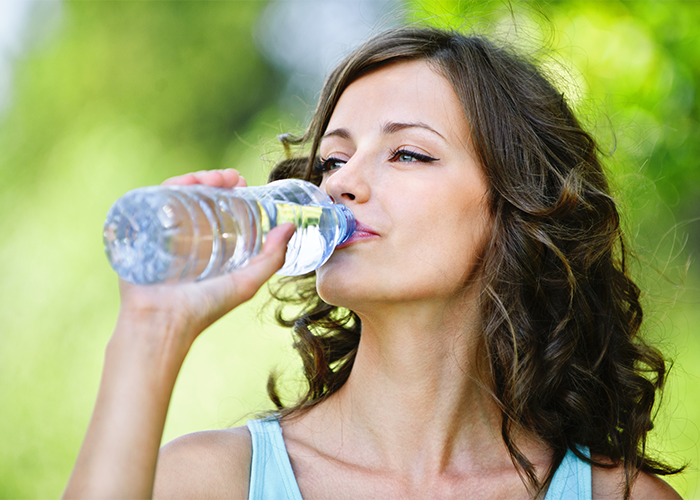
Basically, distilled water is water that is free from any extra substances, good or bad. In short, distilled water is purified by boiling the water until it completely turns to steam. Then, the steam cools back down to liquid form again (yes, we also had flashbacks to learning about the states of matter in middle school science class). Once the water is liquified from its gas form, it’s totally free from any pesticides, bacteria, or other harmful substances that might jeopardize your health.
On the flip side, the distillation process also rids the water of any positive minerals and electrolytes too. To be more specific, distillation removes 99.9 percent of dissolved minerals in water.[4] As mentioned above, most U.S. tap water contains natural minerals that are beneficial for your health and distilling them removes these nutritional compounds.
Knowing all that, you might be asking if you can drink distilled water. Yes, you can, but you might not want to make it a regular thing because your body needs the natural components found in non-distilled water too. If your only goal is to get hydrated, then distilled water can do the job. Yet, it’s not as nutritious as tap or filtered waters that contain electrolytes and minerals.
What is Purified Water?
Purified water is an umbrella term. It encompasses water that is filtered by one of a few different methods, including activated carbon, iodine tablets, or chlorination to name a few. Purifying water removes the bacteria, unwanted chemicals, and contaminants that might be lurking in there. Most bottled water companies sell purified water because it is safe to drink and can still contain the beneficial minerals we discussed above. You can even buy a water filtration system for your home. That way, you can ensure your tap water is super safe to drink.
Because there are a few different types of water purification processes with different benefits, let’s break some common systems to understand each one better:
1. Distillation
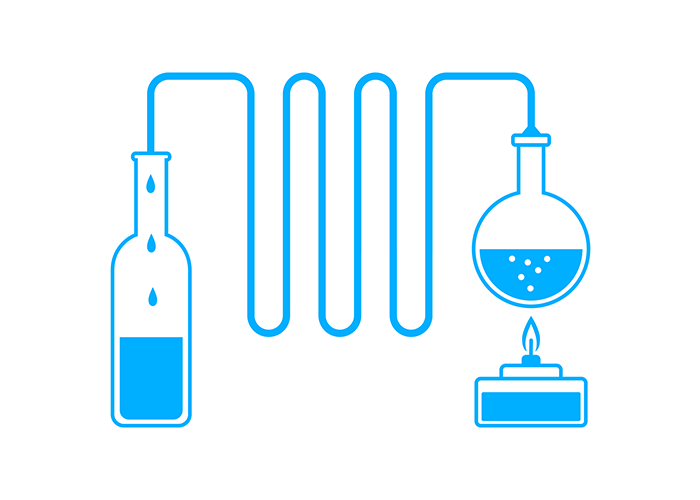
Yes, distilled water is a form of purified water! As we learned above, distilled water is purified by boiling water until it turns into steam, and then back into water again. This removes all good and bad chemicals, minerals and bacteria in the water.
Distillation is most effective at removing bad components, but it requires a ton more energy than other purification processes and is thus worse for the environment.
Fun Fact: Most hospitals use distilled water for disinfecting areas and preparing food. Distilled water is the purest and most controlled form of water for these purposes.
2. Reverse Osmosis
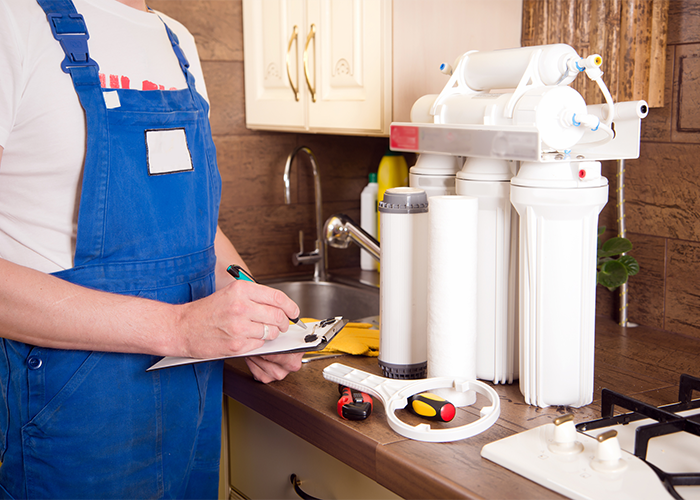
This purification method uses pressure to filter water through a semipermeable membrane. This filtration catches all the bad (and some good) bacteria and minerals. Think of it like sifting flour and sugar when you bake a cake. You end up with a clean mountain of powdery goodness (the flour and sugar), with some chunks of unwanted leftovers in the sifter.
The finished product of reverse osmosis treatment is similar to that of distilled water (no nutritional value), but the process is more environmentally-friendly. So, like distillation, reverse osmosis leaves you with water that is safe to drink but not necessarily beneficial.
3. Filtration
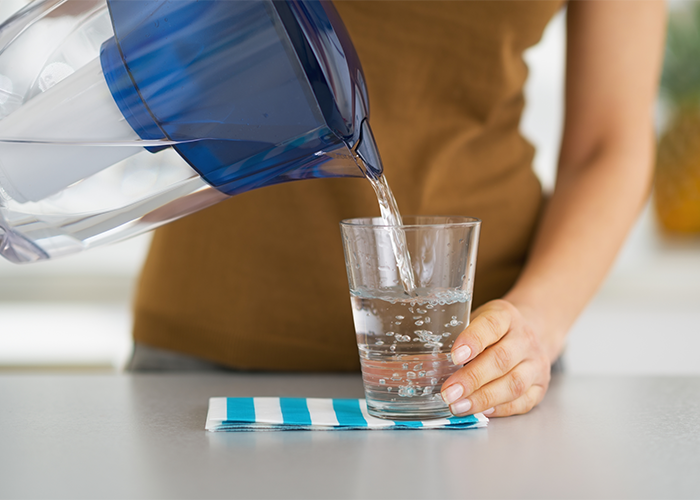
A water filter works similarly to the reverse osmosis process, except the filtration membrane leaves a slightly larger window for good substances to pass through. This allows the beneficial minerals your body needs to stay in the water, while still removing the harmful bacteria and organisms. Most bottled water companies use filtration so that the water you drink is still full of beneficial minerals too.
Water filtration systems can come in a variety of forms, such as carbon block filters or ceramic filters. A common system that you find used in homes is an activator carbon water pitcher. According to the US EPA (Environmental Protection Agency), these filters yield the highest quality water for a post-filtration system.[5]
Remember: Always check the labeling on your water bottles to know the kind of purification method used. You can also look at the nutritional label to see the amounts of chemicals and minerals in the water too.
Distilled Vs Purified Water: Is There Really a Difference?
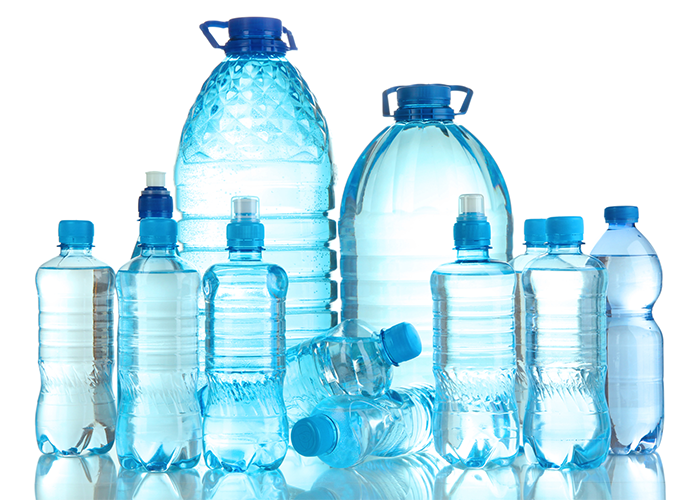
With so many different types of water out there, it might be confusing to remember the difference between them all and which one is best for your body. There is a big difference between distilled vs purified water, so let’s see the main takeaways of this comparison.
1. Distilled water is actually a form of purified water
Distillation (the process that produces distilled water) is a method of purification. Hence, distilled water is actually a type of purified water. Other methods of purification include reverse osmosis, filtration with activated carbon, chlorination, and iodine tablets. So whilst distilled water is derived from the distillation process, the term “purified water” can be used for water treated by different purification methods.
2. Distilled water is less environmentally-friendly
The process of distillation requires mass amounts of energy. When done in large batches for purification plants, the toll on the environment can really add up. One study showed that a water distillation plant used significantly more energy than a reverse osmosis plant.[6] A test showed that 1 kg of water distillation uses about 1.8 kilowatts of energy per hour. [7] Therefore, distilled water might not be the best choice if you’re watching your environmental footprint.
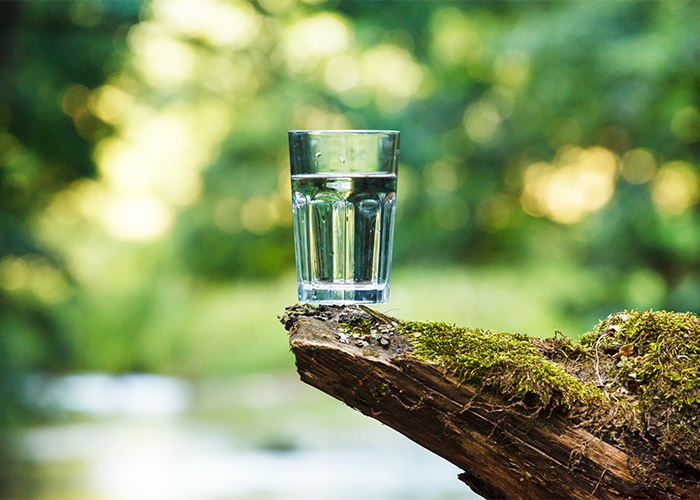
3. Different purification methods produce different nutrition levels
The different types of water purification systems leave your water with varying mineral levels. The least nutritious option, leaving no minerals left for your body, is distillation. Ranking the highest out of all the options would be filtration. Bottled “mineral water” or “natural spring water” from the store are purified using filtration methods. For example, a standard bottle of Fiji water contains naturally occurring electrolytes like calcium, potassium, and chloride.[8] This makes it a good choice to hydrate your body and take in essential minerals.
4. Some purification methods can be done at home (not distillation)
Some water purification methods, such as filtration, can be done at home with little effort. You can use a home filtration system that hooks up to your tap, or use a special bottle or pitcher. This enables you to monitor the safety of your drinking water. Depending on what state you live in, you can see the local water standards for public drinking water. This way, you’ll know if you feel comfortable with the system the city uses for tap water, or if you’d like to go a step further on your own.
If you decide you want to completely purify your water from minerals, you can install a distillation or reverse osmosis tank for your whole house. This is not only costly to set up, it also requires a lot of energy to run. For most households, a simple sink attachment or pitcher filtration system will work just fine. Plus, you’ll keep the beneficial minerals with filtration too.
What Are Their Benefits & Drawbacks Compared to Regular Water?
All water you can buy at the store has undergone some form of purification process. This ensures you won’t consume any harmful bacteria. When it comes to tap water vs distilled water vs purified water, there are some important things to note.
Benefits of Distilled/Purified Water vs Tap Water
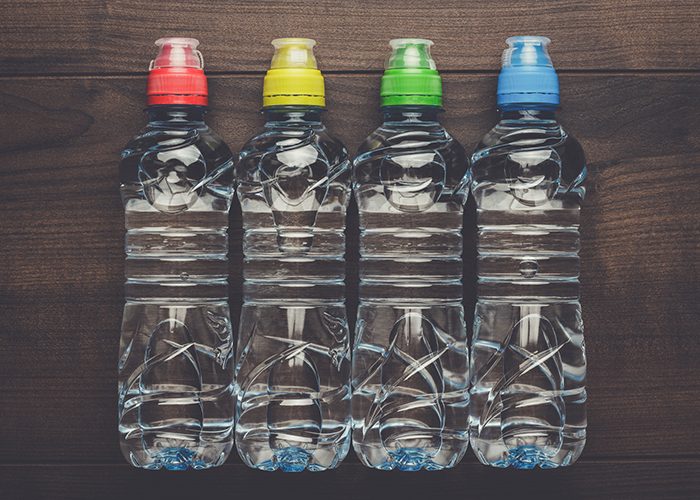
1. Distilled/purified water removes harmful chemicals
The various water purification processes remove harmful chemicals and bacteria from your drinking water. One the other hand, your tap water relies on your local city plant to do it.
2. Tap water contains trace amounts of metals and other additives
Some aspects of tap drinking water are not so great. Chemicals like chlorine, fluoride, and trace amounts of metals, such as lead, can also be found in tap water. Your city might even add them in as an effort to kill off more harmful bacteria. Fluoride, for example, is one additive that most places in the U.S use to “enrich” your water and prevent tooth decay. However, there has been controversy surrounding prolonged fluoride exposure as some studies show its linked to teeth, thyroid, bone, and even brain disorders.[9]
Drawbacks of Distilled/Purified Water vs Tap Water
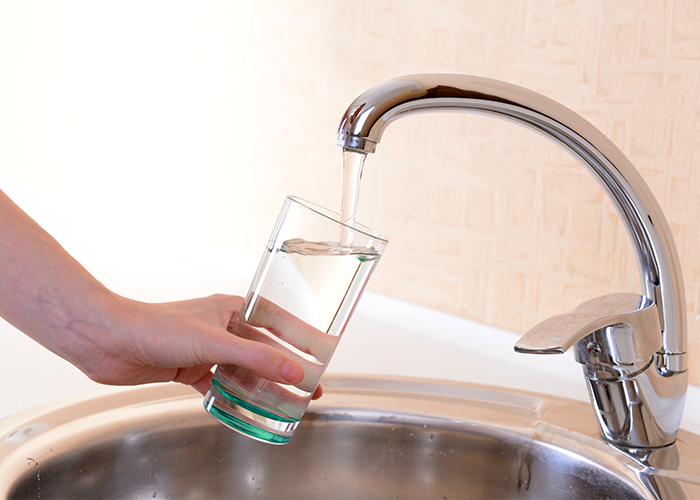
1. Distilled/purified water contains less minerals than tap water
In the case of distilled water, you clean away all amounts of harmful chemicals and bacteria but also all beneficial minerals. In the end, only very simple water with little nutritional value is left. It will hydrate you but without the added support from electrolytes and minerals. On the other hand, tap water can keep some of these minerals when the filtration method is used. The benefit of filtered tap water is that you get safe water with the natural minerals included.
2. Water purification is more costly
The different types of water purification home systems require additional costs, and can even take a toll on your bank account. Drinking water from your tap will put you out nearly no money, except your normal water bills. But with water purification systems you’re faced with another story. To give you an idea, Aquatell brand states that an entire home system of reverse osmosis purification can cost you up to $18,000 to install.[10] Brita, another water filtration brand, has sink installation for around $350, plus pitchers that you fill up each use for $30 (plus new filters every few months).[11] Whether you choose to go all-out with a complete home system or a budget-friendly water filtration pitcher, there are additional costs to consider compared to running water from your tap.
How to Purify Water at Home
After realizing that there are a number of somewhat harmful chemicals and components that might be lurking in your tap water, it might be a good time to learn how to purify water at home. Stay with us — it’s not as hard as it sounds! There are a few easy ways you can purify your drinking water on your own. Whether you want distilled vs purified water, there is an option for you.
1. Boiling
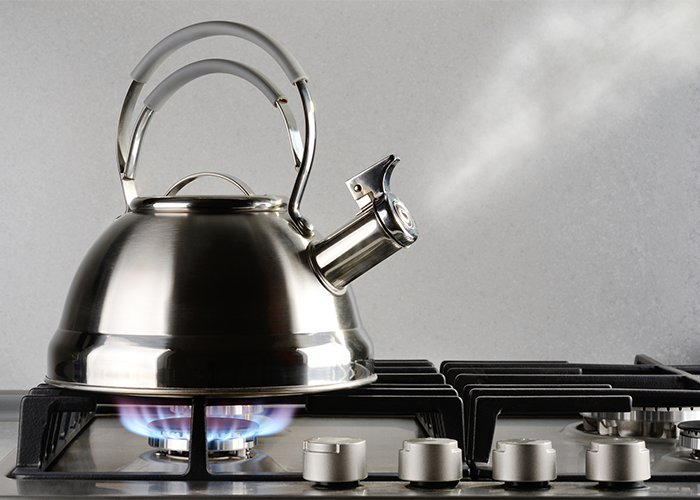
Chloramine is used to disinfect your local water but it can leave an unpleasant taste. Additionally, it can also be harmful for pets like fish if you fill up their tank with tap water. Boiling water for 20 minutes will remove the chloramine content and make it safe for use.[12]
2. Activated carbon filters
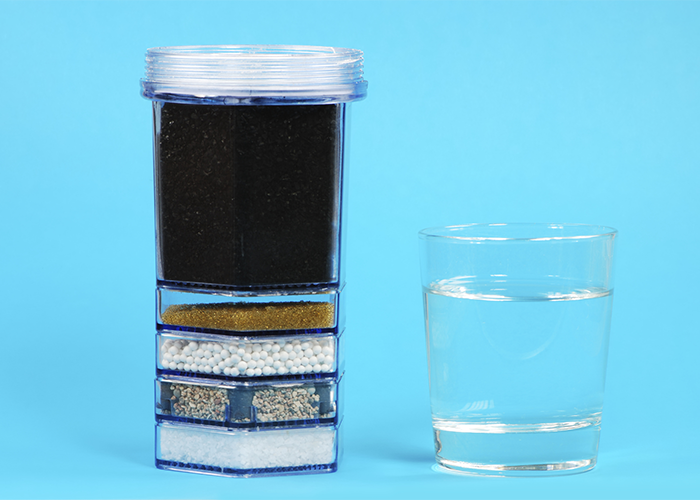
Many water treatment plants use both chlorine and chloramine in their processes. Whilst chloramine can be removed by boiling tap water (as mentioned above), chlorine won’t disperse through boiling.
In such cases, you can use an activated carbon filter to rid your water of them both. Check your city’s plant to know exactly what they’re using in your water supply so you can select the best filtration option for your home.
3. Iodine tablets

You can use iodine tablets to kill any bacteria and viruses in water collected from an unreliable source. Filling up your empty bottle at a park drinking fountain might be one instance of where an iodine tablet can come in good use.
They’re fairly cheap and easy to use. After you drop in a tablet in, you have to wait about 30 minutes before the water is ready for consumption. Check the directions on the package to know exactly how to use these tablets.
4. Filtration pitchers
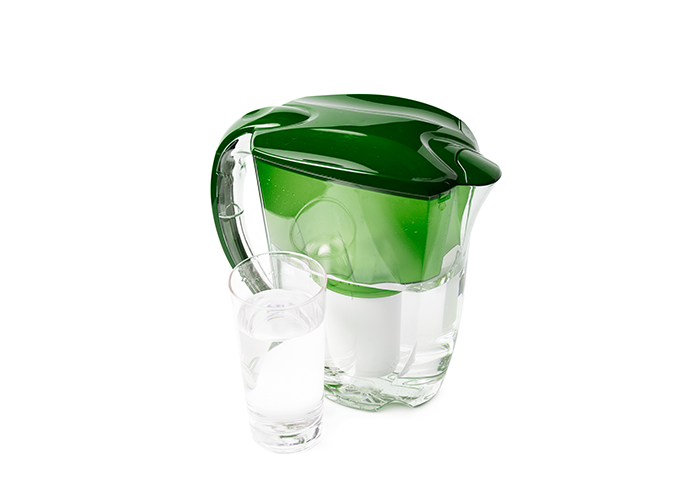
A simple and cheap way to filter water at home is with a filtration pitcher. Brands like Brita have made a mark in this simple home effort to drink water that is free from hidden surprises.
All you have to do with your filtration pitcher is add in water, then watch as it pours through the filtration system for immediately available clean water. Just remember to change out the filter every month, or according to the directions that come with your pitcher.
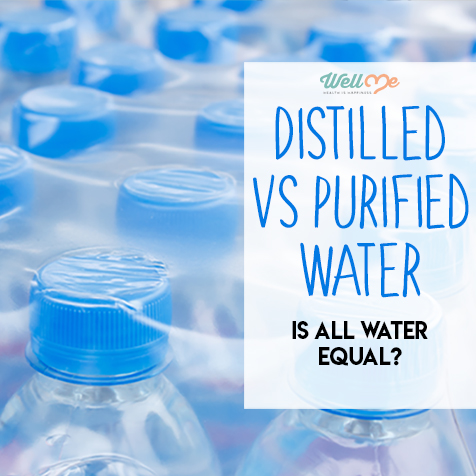
Conclusion
Ignorance is not always bliss — especially when it comes to the water you drink. Knowing the difference between distilled vs purified waters is important to maintaining your healthy lifestyle. Now that you have the information and tools to amp up your water game, there’s no reason you should grab the first bottle you see in the grocery store aisle. Pick the water that is best for you and feel confident you’re getting something safe.
References
- [1] https://www.ncbi.nlm.nih.gov/pmc/articles/PMC5637834/
- [2] https://www.ncbi.nlm.nih.gov/pmc/articles/PMC3775162/
- [3] https://www.ncbi.nlm.nih.gov/pubmed/29857264
- [4] http://extension.uga.edu/publications/detail.html?number=B939
- [5] https://iaspub.epa.gov/tdb/pages/treatment/treatmentOverview.do?treatmentProcessId=2074826383
- [6] https://www.sciencedirect.com/science/article/pii/S0011916400886932
- [7] https://www.intechopen.com/books/desalination-and-water-treatment/distilled-water-production-by-vacuum-heat-pump
- [8] https://www.fijiwater.com/faqs.html
- [9] https://www.jstor.org/stable/26000378?seq=1#page_scan_tab_contents
- [10] https://www.aquatell.com/pages/how-much-do-whole-home-reverse-osmosis-systems-cost
- [11] https://www.brita.de/waterbars
- [12] https://www.sfwater.org/Modules/ShowDocument.aspx?documentID=6920

